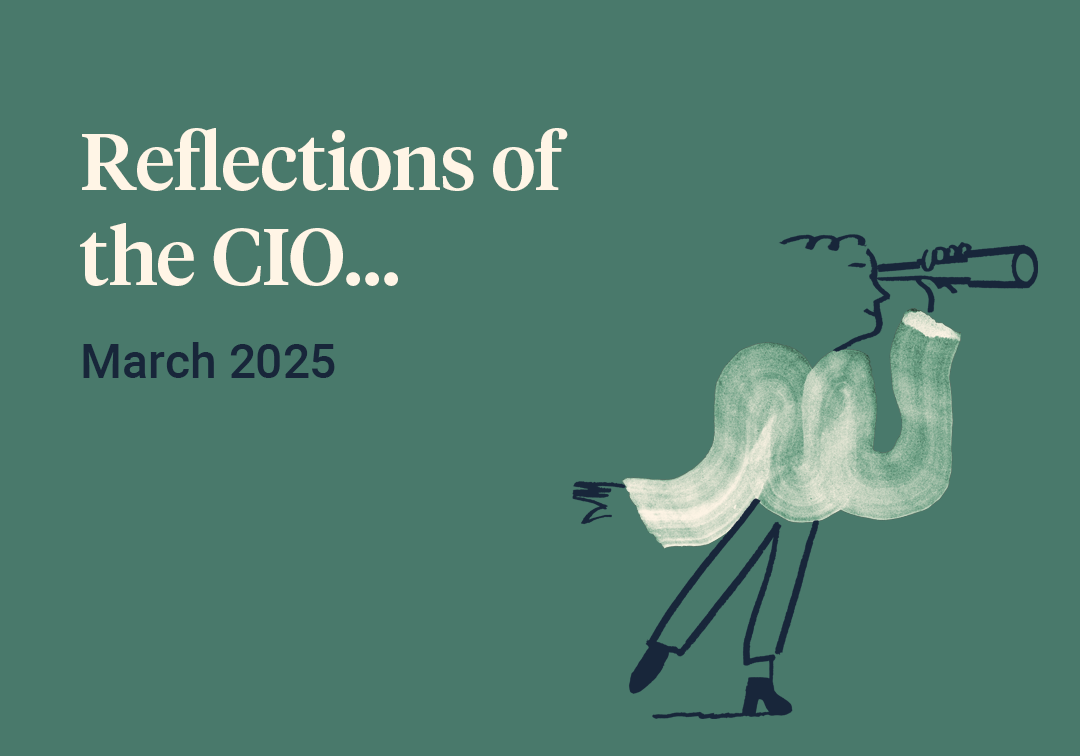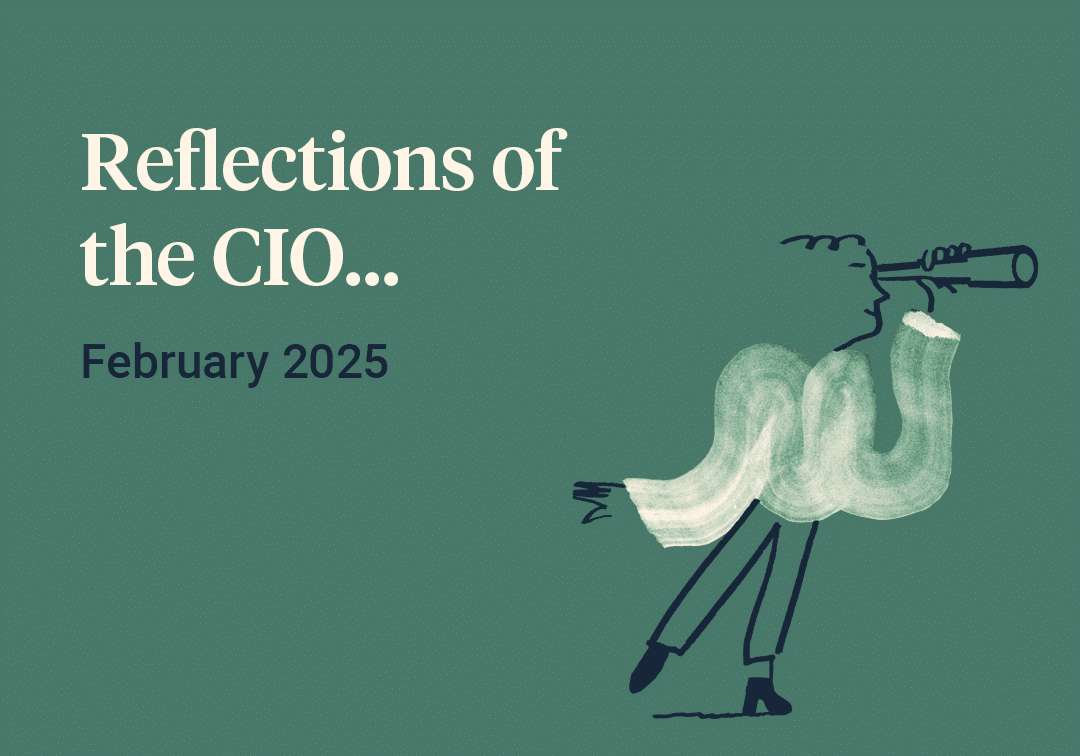Trying to summarise the events of one year and their implications for the future is usually a very tricky thing to manage, and yet this time around we think we can capture the essence of what we want to say in the simple phrase that ‘not every shock is a surprise.’
It was not a surprise coming into 2022 that inflationary pressures were building as a result of reopening post lockdowns. Lots of pent-up demand chasing goods and services which an impaired supply chain was struggling to provide was always going to lead to upward price pressure and, to a large extent, investors could see this coming at the beginning of 2022. Upon reflection, it was also not really a surprise that Russia invaded Ukraine, given the entire world could see the massing of troops and tanks on the borders for weeks ahead of the invasion itself. Yet both events when they happened were huge shocks to markets and global economies. The energy price spike unleashed by sanctions on Russia turbocharged inflation around the world, forcing aggressive responses from central banks as they scrambled to get on top of rampant headline readings not seen for many decades. In reality, it was not a surprise that higher interest rates were on the way, it was just a shock that they came faster and earlier than anyone had expected.
As a result of this shift in gears, the story of the year became one of markets struggling to adjust to the implications of a 40-year period of low inflation and low interest rates ending, and a new era of higher inflation and higher interest rates beginning. For a financial system with over $300 trillion of debt, this was a scary prospect and markets predictably took it badly. Drawdowns (or falls from the highest high point to the lowest low point) of -20% in both stock and bond markets happened broadly simultaneously, something which is very unusual, reflecting perhaps just how epically overvalued both asset classes were coming into the year. Market and investor time horizons also seemed to collapse to the very short term, with everyone focussing in on monthly inflation data, looking for signs of relief from surging headline rates.
As the year ended, we had another unusual situation, with the three major engines of the global economy simultaneously struggling with their own idiosyncratic burdens. The USA was nervously waiting to see if the rapid rise in dollar interest rates would have the desired effect on domestic inflation or if more aggressive action would be needed. Europe was struggling with the impact of war, wrestling with the linked issues of energy and cost of living crises. China, so often the default economic motor of the world, was instead dealing with the legacy of zero Covid and widespread ‘anti business’ policies, whilst simultaneously battling a huge internal property crisis.
Do you need help managing your investments?
Our team can recommend an investment strategy to meet your financial objectives and give you peace of mind that your investments are in good hands. Get in touch to discuss how we can help you.

Perhaps the hardest current issue to weigh is the merit of consensus opinion that the ‘worst is yet to come.’ Despite the best attempts of speculative tech stocks, crypto scandals and His Majesty’s Government’s antics in the UK gilt market, nothing of systemic importance has ‘broken’ yet as a result of market turbulence in 2022. As we enter the initial stages of a global economic slowdown, it clearly does make some sense to think that the real pressure on company profits and cashflows is still to come. This future pain is, in part at least, why markets have fallen so far already but, to complicate matters further’ when assessing if the falls are ‘enough’ we now have to take account of the potential impact of unpredictable geopolitics, illiquidity and market short termism.
Our assessment is that currently there remains a decent chance of visible risks, which should be known about and largely priced, morphing into larger shocks when they actually happen. For example, the bond market still thinks US interest rates will peak lower and earlier than the Federal Reserve is guiding, a situation we found ourselves in at least twice in 2022 and which ended badly both times. Similarly, it would not be a shock if the huge, slow motion property crisis in China continues to sour growth prospects for years to come, with knock on implications for the rest of the world.
At the same time, we do see some decent opportunities, in spite of these overhanging issues. The fact that cash and government bond yields are so much higher now than they have been for many years offers us not only the prospect of a positive return, but also the chance of decent diversification. Some risk assets – such as small and mid-sized equities in various parts of the globe have halved in the course of 2022, opening up enticing long term entry points.
Neither of these opportunities are particularly complex or new, in many ways they are the ‘plain vanilla’ options when constructing portfolios. We don’t think there is any particular need to go looking for something complicated or clever at the moment, given that we can see that it will take a little more time before it becomes clearer what the real fundamental trends are in this new investment regime we are now living in. Our best guess is that we will find out soon enough – perhaps by the summer of this new year – whether markets have managed this shift without significant real damage. Until then, we would prefer to err on the side of caution, watch, wait and keep our eyes open for the new opportunities and threats which will undoubtedly emerge.
Do you need help managing your investments?
Our team can recommend an investment strategy to meet your financial objectives and give you peace of mind that your investments are in good hands. Get in touch to discuss how we can help you.

Article sources
Editorial policy
All authors have considerable industry expertise and specific knowledge on any given topic. All pieces are reviewed by an additional qualified financial specialist to ensure objectivity and accuracy to the best of our ability. All reviewer’s qualifications are from leading industry bodies. Where possible we use primary sources to support our work. These can include white papers, government sources and data, original reports and interviews or articles from other industry experts. We also reference research from other reputable financial planning and investment management firms where appropriate.
The views expressed in this article are those of the Saltus Asset Management team. These typically relate to the core Saltus portfolios. We aim to implement our views across all Saltus strategies, but we must work within each portfolio’s specific objectives and restrictions. This means our views can be implemented more comprehensively in some mandates than others. If your funds are not within a Saltus portfolio and you would like more information, please get in touch with your adviser. Saltus Asset Management is a trading name of Saltus Partners LLP which is authorised and regulated by the Financial Conduct Authority. Information is correct to the best of our understanding as at the date of publication. Nothing within this content is intended as, or can be relied upon, as financial advice. Capital is at risk. You may get back less than you invested. Tax rules may change and the value of tax reliefs depends on your individual circumstances.
Related blog posts
About Saltus?
Find out more about our award-winning wealth management services…
Winner
Best Wealth Manager
Winner
Investment Performance: Cautious Portfolios
Winner
Top 100 Fund Selectors 2024
Winner
Best Places to Work 2024
£8bn+
assets under advice
20
years working with clients
350+
employees
97%
client retention rate


